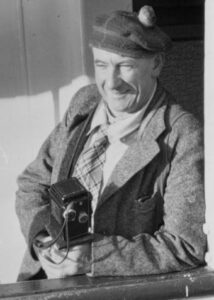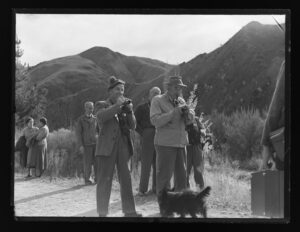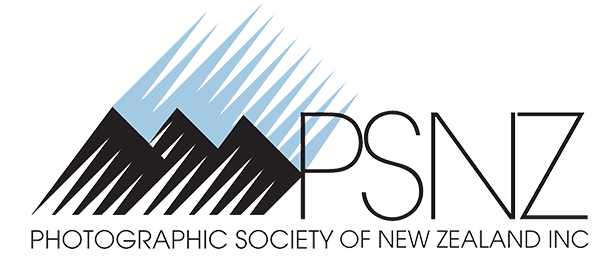“To promote the fuller and wider enjoyment of photography in New Zealand as an art, science and activity.”
– The first objective of the Photographic Society of New Zealand’s Constitution, 1953

Fred Bowron went to America. That was the beginning.
Fred was a member of the Christchurch Camera Club – a group of keen amateur photographers sharing images, knowledge, enthusiasm and friendship. In the 1950s camera clubs in New Zealand were a growing phenomenon caused by the release of cameras and films onto the market after import restrictions imposed by the Second World War were lifted.
In 1950, when Fred went to the United States he left with a letter of introduction given by fellow member Les Casbolt, to Ray Meiss, a pharmacist and member of the Photographic Society of America (PSA). On arrival in Honolulu Fred was met by Urban Allen who had a letter from Ray.
Ray and Urban were to play an active role in the development of the New Zealand Society. It was at their persuasion that Fred attended the PSA Annual Convention in Baltimore and subsequently became enthused with the idea of forming a New Zealand association of camera clubs.
When he returned he proposed the Christchurch Photographic Society organise a ‘get-together’ of South Island clubs, plus a national exhibition in Queenstown. On the proviso that Fred could ‘pick his own gang’, he accepted the appointment of organiser and his co-opted committee members were Len Casbolt, Ron Sparrow, Albert Marker, Roy Truscott and Laurie Thomas.
Such was his enthusiasm, other photographers soon became involved – from the Dunedin Photographic Society, George Chance, Ray Kirk and Dick Ratcliff. In Hamilton, Fred and Len, undisputed leaders of the movement, met with Waikato Photographic Society’s Harold Larsen, Irene and Russell Cooper, and in Nelson with Frank Hinchcliff and Barry Woods.
The ‘get-together’ had now become a national one and the idea of a national body was under discussion. Although some clubs feared a national body would take over their national exhibitions, the leaders of some of New Zealand’s larger societies – Auckland, Waikato, Wellington, Christchurch and Dunedin – were fully sympathetic and concerns were worked through.
The prime reasons for the society – sharing a common interest; getting the chance to see other peoples’ photography and having fun – won the day.
Invitations were sent to the approximately 30 New Zealand camera clubs of the time, and over 100 keen photographers from across the country attended the South Island Photographic Convention, held in Queenstown on 24 – 30 April 1952.

From the Nelson Provincial Museum
The first ‘National Salon of Photography’, held in conjunction with the convention, had an extensive exhibition of self processed monochrome prints of the set size, 16 inches x 20 inches, and mounted.
They echoed the trend of the time for pictorial photography and the photographers receiving honours were: Richard Blick, Clifton Firth, Frank Hoffman and J. F. Hinchcliff.
On the last day of the convention a proposal to stage an annual convention, alternating between the North and South Islands, and to establish a governing ‘Council’ of New Zealand clubs were met with wide acclaim.
It was agreed that the Waikato Photographic Society would host the 1953 convention in Rotorua, and at that event, the Society would be formally established. It was suggested that the association be developed along the lines of the American Photographic Society, which gave its personal and organisational support for the venture. It would be known as the ‘New Zealand Photographic Council’.
At the 1953 Rotorua convention an inaugural meeting was held on April 17, chaired by Arthur Fow (Hamilton), President of the 1953 Convention Committee.
Thus, the Photographic Society of New Zealand (PSNZ) was born on 17 April 1953.
And the rest, as they say, ‘is history’.
Read about the first few early conventions here:
